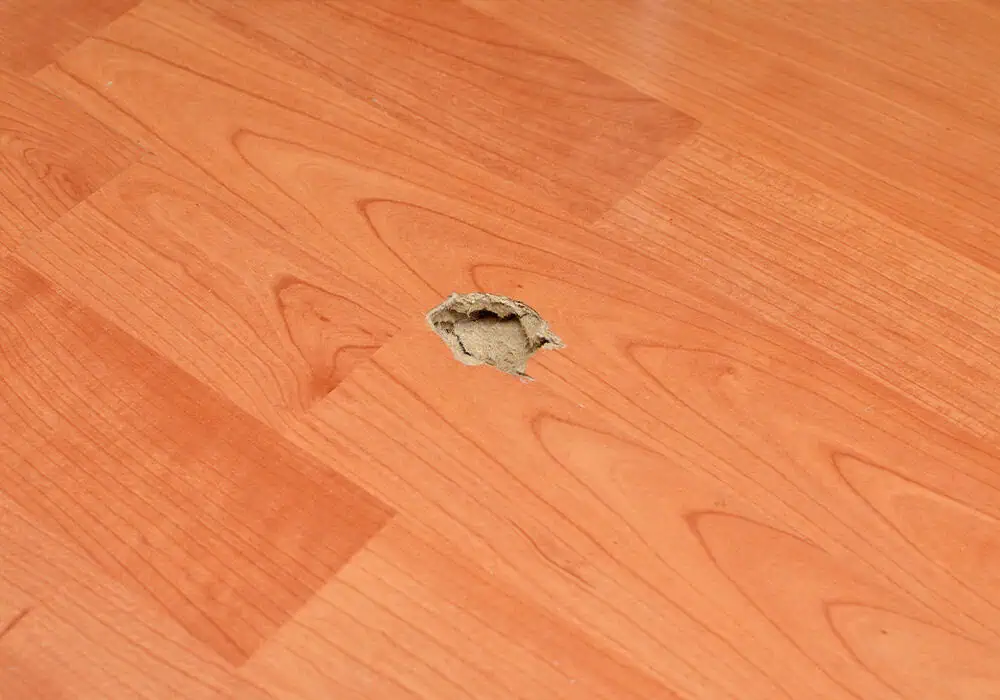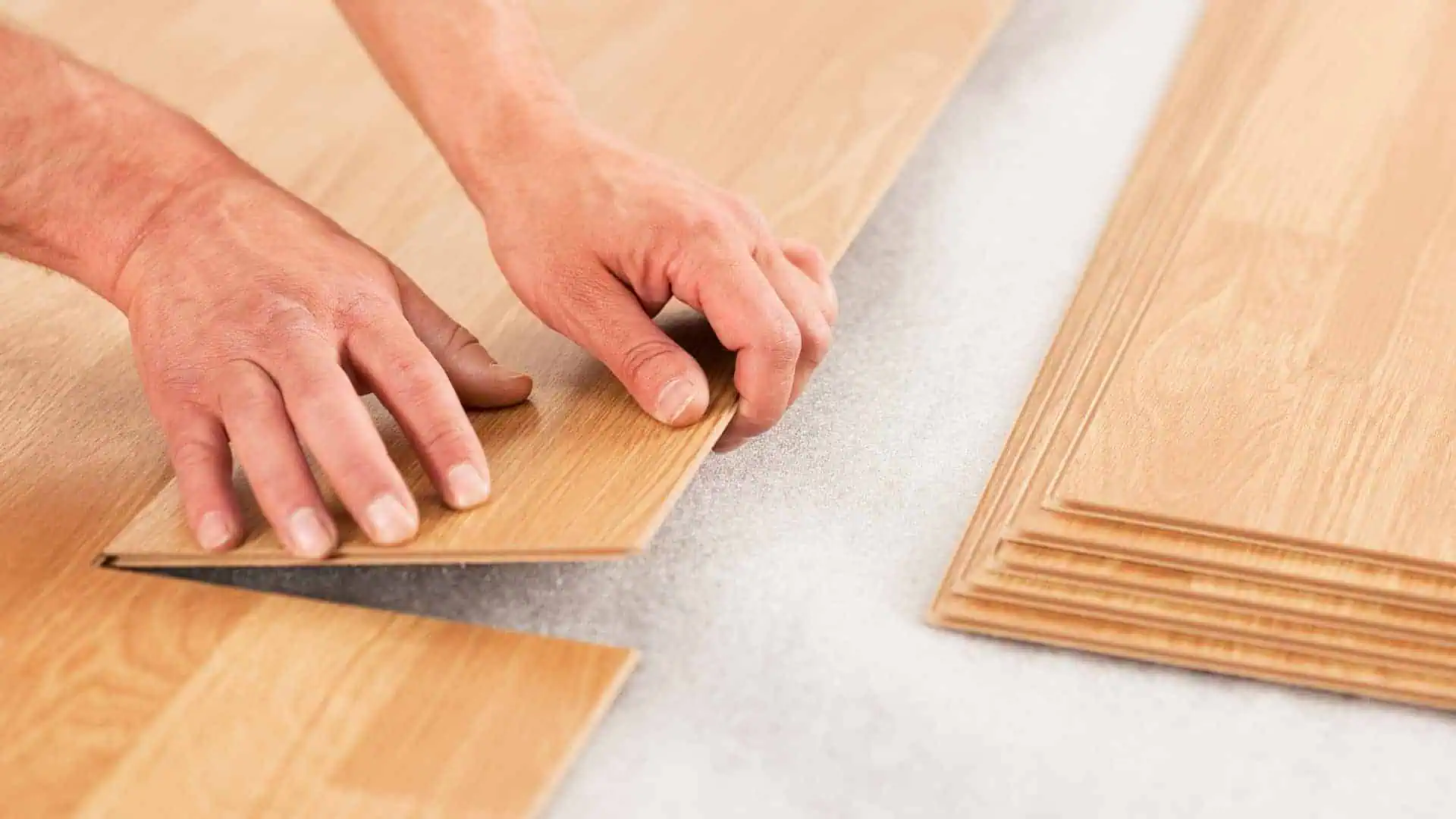Most of us know that underlay improves the feel of your carpets and makes them last longer. But does the same apply if you’re installing laminate? After all, it’s a type of hard flooring so why would you need cushioning underneath?
In this expert guide, we will provide the definitive answer to whether you really need underlay for laminate flooring, and the benefits it brings to the table.
In this guide
What is laminate underlay?

Much like carpet underlay, laminate underlay is an extra layer of cushioning that’s laid underneath your flooring.
The primary purpose of this layer is to protect the boards from excessive wear and provide a stable base on which the laminate can be installed. Yet there are a number of additional benefits, which we detail below.
Do you need laminate underlay?

Some laminate flooring comes with padding pre-attached to the back of the boards. In this case, you won’t need to install a separate layer of underlay. In fact, extra underlay will cause more harm than good, making your laminate planks feel unbalanced and stopping them from locking together properly.
The key benefit of pre-attached underlay is that it removes a step in the fitting process, saving you time and potentially money. However, installing separate underlay underneath your laminate is usually the better option and what we would always recommend.
With pre-attached underlay, the gaps between the laminate planks represent gaps in the underlay. This isn’t the case with a roll of underlay, which will be laid in strips and any gaps between the underlay taped. This guarantees full coverage of the subfloor, ensuring not only a more stable base but also better heat and sound insulation.
How thick should laminate underlay be?

Laminate underlay is usually around 3-4mm thick. Carpet underlay is often a lot thicker (between 8-11mm) because carpet is a lot softer and you can feel the cushioning underfoot, unlike with hard flooring.
Laminate underlay should be extremely dense to provide the required support for the boards and stop them rocking as you walk on them. It’s for this reason that the best laminate underlays are typically made from high-density sponge rubber.
Can you use carpet underlay?

If you’re making the switch from carpet to laminate, it’s tempting to save money by leaving the existing underlay down. However, this is a mistake that will cause a lot of damage – to your floor and bank balance – in the long run.
Carpet underlay doesn’t work with laminate flooring. If you install thick underlay under your laminate then it will be too bouncy, and the floor won’t feel stable or comfortable. Moreover, you’ll likely damage the boards and void your warranty, meaning you’ll have to fork out to replace both the underlay and flooring down the line. Better to get it right first time.
The benefits of laminate underlay
Conceals minor imperfections

Laminate flooring boards tend to be thinner than hardwood planks. As a result, any unevenness or imperfections in the subfloor can affect both how the boards lock together and the finished aesthetic.
A dense, high-quality underlay can help negate any minor irregularities (up to a couple of millimetres) in the subfloor, levelling it and aiding installation. As a result, you won’t have to spend time or money fixing small nicks, holes and grooves.
That said, if your subfloor has large gaps or depressions or runs out by more than a couple of millimetres then you’ll need a professional to fix it using a levelling compound or plywood sheets prior to laying your flooring.
Moisture control

If you’re installing your laminate planks over concrete, cement or tiles there’s always the chance of moisture rising from the subfloor. This extra moisture or damp can quickly damage your laminate leading to costly replacement fees.
Installing a plastic damp-proof membrane (DPM) prior to installation is one way you can counteract damp issues, but many modern laminate underlays now incorporate a built-in DPM, allowing you to skip that step while offering peace of mind and extending the lifespan of your laminate.
Better heat insulation

Underlay acts as a form of insulation underneath your flooring. It reduces heat loss and stops cold air rising from the subfloor, meaning your rooms heat up quicker and stay warmer for longer.
The upshot is better energy efficiency and potentially lower heating bills.
Reduced wear and tear

Installing laminate without any underlay means that the boards are always in contact with the subfloor.
Under the pressure of footsteps, the boards create friction, which can not only damage the subfloor material but also the laminate itself, reducing its lifespan. Underlay, although costing more upfront, is an investment that will pay dividends in the long run by adding a much-needed layer of protection between the two.
Nicer feel underfoot

Laminate is usually laid on top of solid subfloors like concrete, so installing an underlay will provide a welcome sense of cushioning.
You’ll be surprised at how much better your laminate feels underfoot with just a 3mm-thick underlay underneath it.
Reduced noise

Underlay, particularly products made from sponge rubber, does a great job of reducing sound transmission due to its natural air pockets. This means the effect of footsteps and noise between floors will be dulled.
All of our laminate underlays reduce impact sound by 20 dB or more, leading to a quieter, more peaceful living environment.
The final word
Hopefully by now you can see why you should always install underlay beneath your laminate flooring. The benefits – longer-lasting floors, a comfortable feeling underfoot, warmer rooms, less noise, in-built moisture control, easier installation, reduced wear and tear – far outweigh the initial monetary outlay.
If you need any help choosing the right type of laminate underlay for your project, get in touch with our experts at contact@simplyunderlay.co.uk. We’d be more than happy to help.

